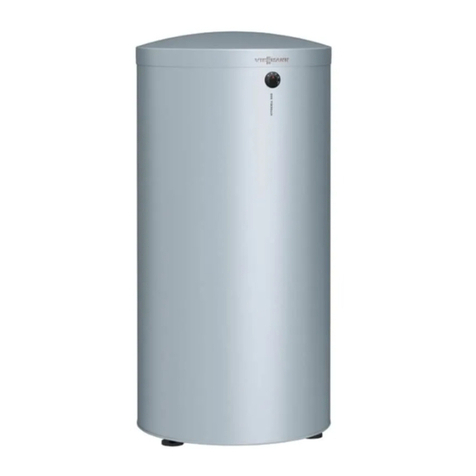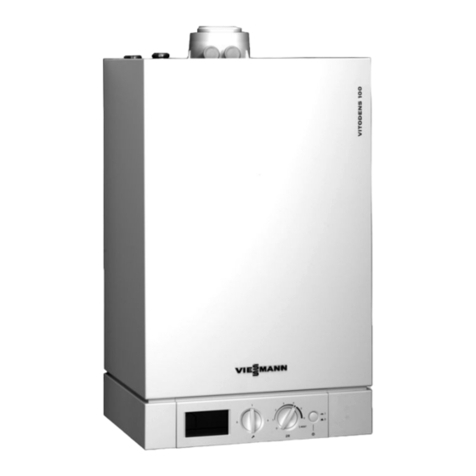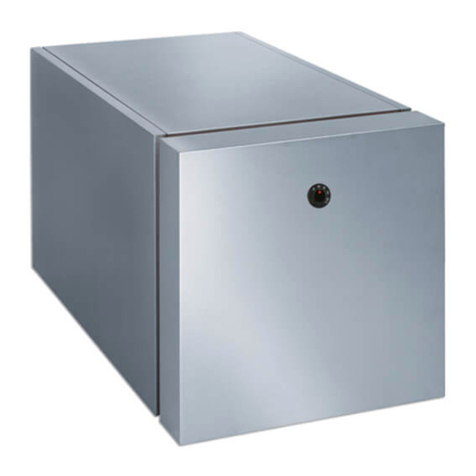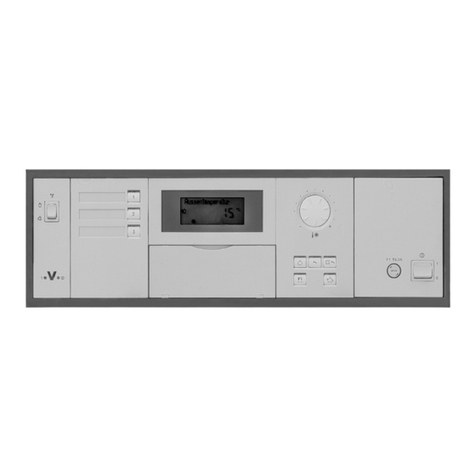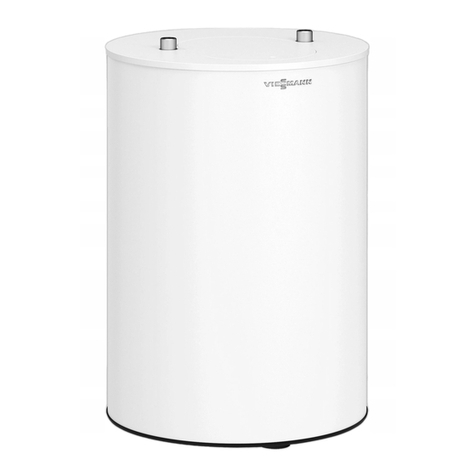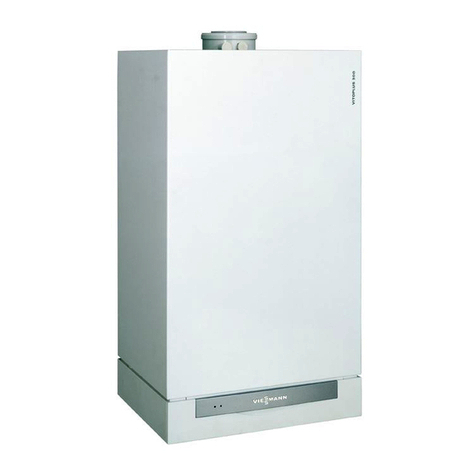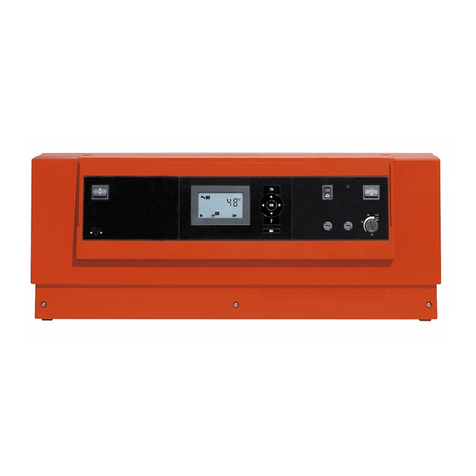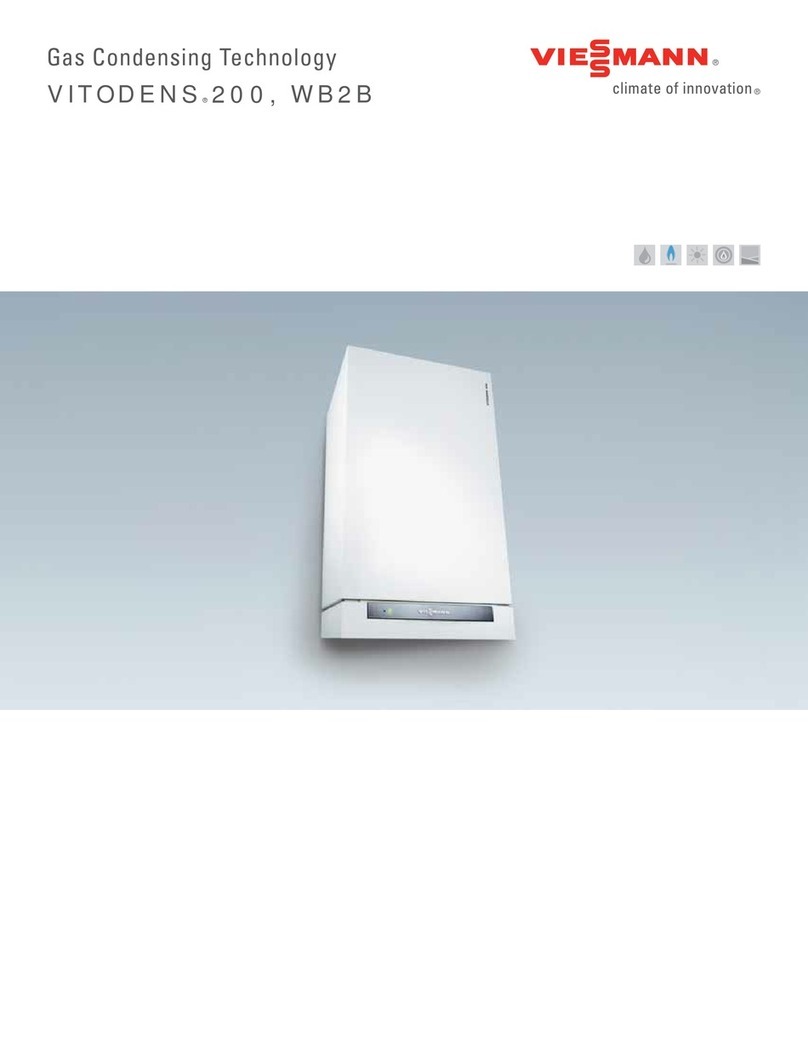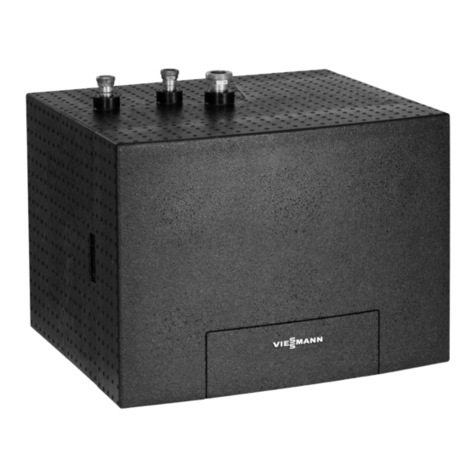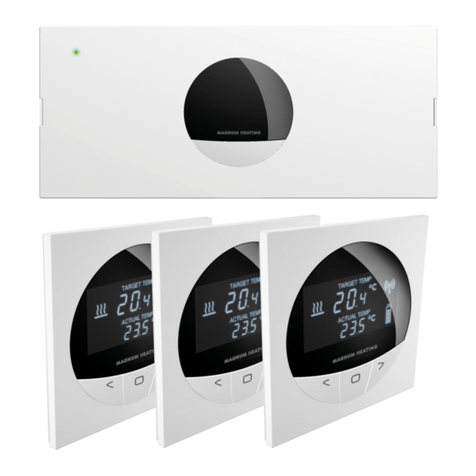Product description
VITOBLOC 200 EM-401/549 / EM-363/498 ESS Energie Systeme & Service GmbH 9
5414 733 09/2009
2.1.7 The gas lane and gas-air mixer
The cogeneration module is supplied with gas through
a loosely supplied modular safety gas lane
(components approved in conformity with DVGW).
The gas lane should be located above the module in
the direct vicinity of the engine.
The gas-air mixer with the flanged butterfly valve
works according to the Venturi principle and mixes the
gas with the combustion air.
Components and functions
The gas lane is in the scope of delivery of the
cogeneration module in conformity with DIN 6280 Part
14 and consists of:
Precision gas filter (included in the delivery)
The precision gas filter protects downstream
equipment from soiling. The matted fleece filter mat
made of polypropylene offers a high level of
flowthrough output, a high degree of purification and
long service lives. The precision gas filter is mounted
outside of the module.
Elastic stainless steel hose line (included in the
delivery)
For decoupling the structure-borne noise between the
gas precision filter and ball cock with thermally
triggering blocking equipment.
The ball cock with thermally triggering blocking
equipment
A fusible cut-out arrests a closing body pretensed by
a compression spring. The fusible cut-out releases the
closing body when it reaches the triggering
temperature of 92°–100 °C. This closes into a closing
contour and forms a driving fit that is also maintained
when the compression spring loses its force due to
further temperature impact.
Gas-pressure guard for minimum pressure
The gas-pressure guard is engineered for the
application range in accordance with DIN 3398 Part 1
and Part 2 and designed for falling pressure.
Two magnetic valves
The two magnetic valves are engineered as group B
gas safety valves in accordance with DIN 3391/3394,
EN 161. The magnetic valves are made of spring-
loaded valve discs and a screen to protect the valve
seat. The starting gas quantity and the volume flow
can be adjusted. The valve is closed without a
current.
Sealing control unit
It consists of monitoring electronics for installation in
the switching cabinet of the cogeneration module and
a pressure guard. It is suited to gas regulator lanes
with two safety valves and it checks the safety
function of the valves before starting or after shutting
off. It has the job of discovering any unacceptable
leak in one of the gas valves and preventing the
block-type thermal power plant from starting. The
other gas valve continues to function without any
problems and reliably blocks the gas.
– Zero-pressure regulator for fully stabilising to
zero pressure after the gas lane
The zero-pressure regulator keeps the gas-air mixture
constant. The zero-pressure regulator is equipped
with a preliminary pressure equalisation membrane
for a high level of regulating accuracy with changing
preliminary pressures as well as with a zero close.
Linear actuator
The linear actuator functions according to the rotary
slide valve principle for linear flowthrough to adjust the
gas-air mixture for lambda regulation.
Elastic stainless steel hose line
The elastic stainless steel hose line is in the
cogeneration module.
Gas-air mixture with a butterfly valve
Special characteristics
The gas flow pressure has to be 25–50 mbar at the
transfer point from the block-type thermal power plant
to the gas regulation lane.
2.1.8 Ignition system
The ignition system supports the starting process of
the gas spark-ignition engine.
It only ignites through a camshaft pick-up during the
intake cycle. The angular ignition spacing
irregularities of each of the cylinders are realised via
holes drilled on the camshaft wheel.
Components
The ignition system is designed as a contactless
electronic capacitor discharge ignition system based
on the camshaft.
It consists of ignition coils (one coil per cylinder),
electrical ignition distribution, the revolution
transducer for the camshaft, silicon ignition cables,
spark plug sockets and the high-performance
industrial spark plugs for stationary gas-fuelled
engines.
Special characteristics
The ignition system can be adjusted for the point in
time of ignition when operating the inputs and outputs
for external adjustment of the point in time of ignition.
The safety equipment can also be turned off.
